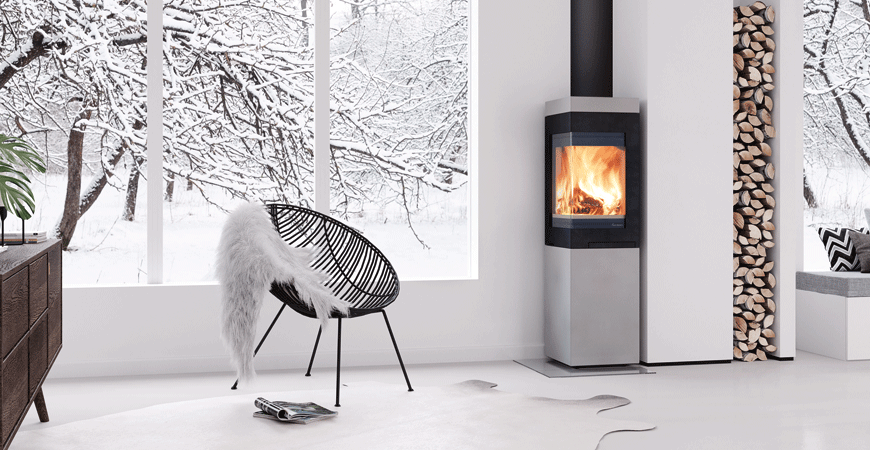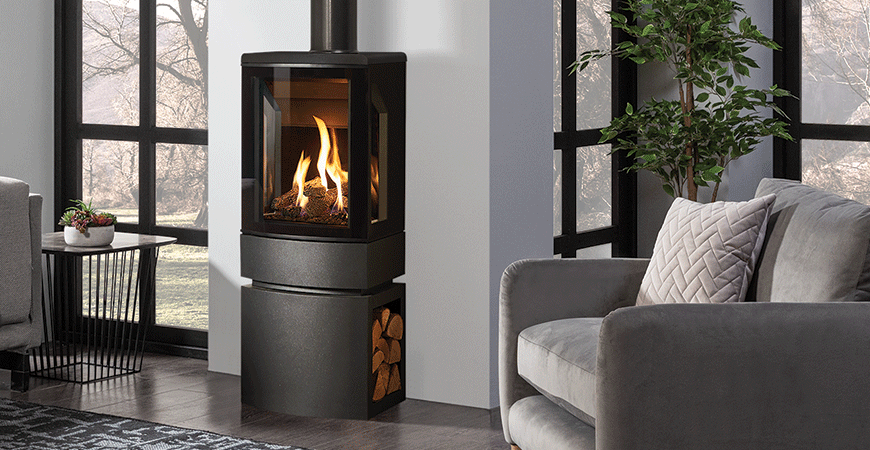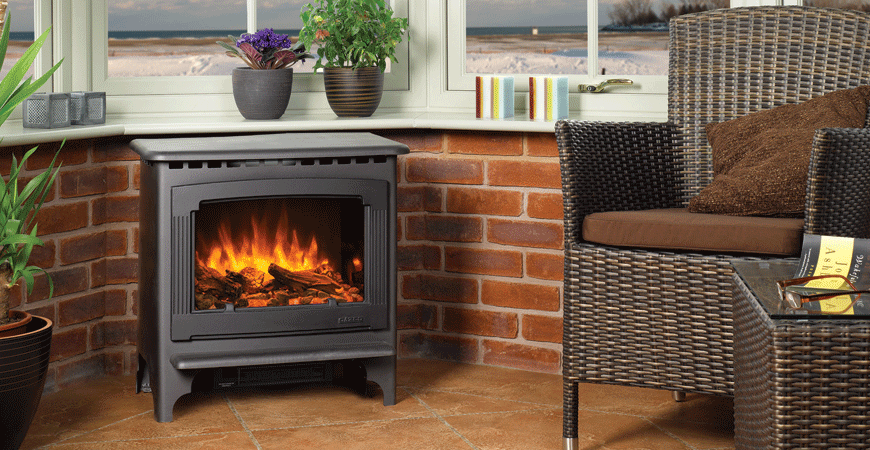Looking to install a log burner in your conservatory? A conservatory is a beautiful addition to any home, offering an extra space that can be enjoyed throughout the year. Many homeowners choose to use their conservatory as a second living room or dining area. Adding a wood burner can make it even more cosy and welcoming.
However, before making any changes to your conservatory, it’s important to consider the options available. In addition, take care of any regulations that you should be aware of.
Wood burning stoves in a conservatory
A wood burning stove can be a wonderful addition to any conservatory, providing warmth and creating a welcoming atmosphere. However, there are a few key points to consider before installing a log burner in your conservatory.
Is it Suitable?
Firstly, it’s important to ensure that your conservatory is suitable for a wood burning stove. A log burner should be kept away from combustible materials and doors. Your installer will also need to consider whether a prefabricated metal chimney can be short and self-supporting (within regulation). Alternatively, whether it needs to be attached to the main building wall to get past the roof level.
Ventilation
Another thing to consider is the ventilation in your conservatory – or, perhaps more appropriately, the air supply your log burner needs. Some wood burning stoves offer an excellent solution for conservatories by providing the option of a direct external air supply. This feature enables the appliance to take combustion air directly from outside the property, thus reducing internal drafts.
You will also want to use a carbon monoxide detector as an extra safety measure.
Regulations that you need to comply with when putting a real log burner in a conservatory
When installing a log burner in your conservatory, it’s important to comply with the relevant regulations. A log burner must be installed by a professional who is qualified and registered with a competent person scheme. They will be able to advise you on the appropriate stove for your conservatory, as well as any installation requirements. For example, you may need to install a non-combustible constructional hearth, depending on the type of log burner you choose.

Gas fires in a conservatory
If you prefer the convenience of a gas fire, this can also be a great option for your conservatory. Gas fires are easy to use, and require less maintenance than a real wood burner. However, there are a few things to bear in mind when considering a gas log burner for a conservatory.
As with a wood burning stove, you will need to consider factors such as the size of the conservatory, the insulation, and the ventilation. A professional will be able to advise you on the best type of fire for your needs.
Like a real log burner, it is important to consider minimum distances to combustibles. Additionally, the same assessment for a prefabricated chimney will need to take place. With gas fires and stoves, balanced flue installations are well-suited and make a smart choice for a chimneyless installation.
Regulations to be aware of for installing a gas fire in a conservatory
Any gas fire must be installed by a Gas Safe registered engineer, who will be able to ensure that the installation is safe and complies with relevant regulations. In addition, it’s important to have a carbon monoxide detector installed in your conservatory, to provide an early warning of any potential problems.

Electric fires in a conservatory
For a low-maintenance option, electric fires are a great choice for your conservatory. Electric fires are easy to use and require no maintenance, making them a great choice for those who want a hassle-free option.
Electric stoves can inject a little heat into the room during cooler evenings without the need to turn on any central heating. During summer months, the visual effect can be used in isolation to add atmosphere without adding more heat, or the thermostatic control can be used to maintain temperature should the party continue into the cooler small hours of the night!
No Flue Requirements
For the best spot for your electric stove, access to a socket for power is about the only consideration. With no flue requirements, an electric stove can be placed anywhere. The warm air is circulated by a fan thus spreads rapidly through the room. In addition, it can act as a warm air ‘curtain’ across cool areas. Keep combustible materials or furniture away from the outlet as per the installation instructions of the appliance.
Regulations to be aware of when installing an electric fire in a conservatory
Relax. You don’t need a chimney or flue for an electric stove or fireplace. Just a standard 13A wall socket. (If there is no available 13A socket, seek advice from a qualified electrician. An electrician will inform you of the available options within building regulations.)
An electric stove like the Gazco Marlborough2 shown below can be placed almost anywhere. However, if you are building a media wall or faux chimney breast to house your electric fire, you may want to enlist a professional to do the work for you.

What else do you need to consider?
One question you might ask is ‘Do you need planning permission to put a log burner in a conservatory?’
In general, you do not need planning permission to install a log burner in your conservatory. As long as the installation complies with relevant building regulations.
However, if your property is a listed building or is located in a conservation area, you may need to obtain planning permission before making any changes to the property.
It’s important to check with your local authority to see if any restrictions apply in your area. A qualified professional will be able to advise you on any requirements specific to your installation.
Find out whether you live in a Smoke Control Area.
Which types of log burners are best in conservatories?
This comes entirely down to personal preference. Conservatories generally have a fairly high heat loss but you do not want to overheat either.
If choosing a wood burning stove, it is better to drive a stove hard rather slumber it, so for most installations a 5kW appliance will be more than enough for the majority of the year.
Likewise, a 5kW gas fire should be plenty for a conservatory installation.
If choosing electric, most Gazco electric fires are a suitable match for a small to medium conservatory. They offer up to 2kW heat output. Freestanding electric fires add a striking focal point with flexible positioning and no installation. Accessories such as mood lighting kits can add extra ambience to the room.
Can you build a chimney through a conservatory roof?
Yes. It is best to discuss your options with your fitter. Conservatories come with different material roofs such as glass, plastic and tile. There are innovative roof flashings on the market that are suitable for non-standard roof finishes.
What should you do if you have no chimney?
As mentioned, electric fires do not require a chimney. Balanced flue gas fires offer a great solution in a space that does not have an existing chimney. But if you do need a chimney, Stovax Professional XQ is the perfect solution. This is a complete twin wall internal or external flue system that allows you to install a wood burning stove where none currently exists.
So, can you put a log burner in a conservatory?
The answer is yes. However it is important to ensure that your installation is safe and complies with relevant regulations. Always use a qualified professional to install your fire. Follow the manufacturer’s instructions when using it. With a little care and attention, a log burner can be a great addition to your conservatory. Enjoy the warmth and welcoming atmosphere it provides for you and your family.
Post by Annabelle Carvell – Stovax
